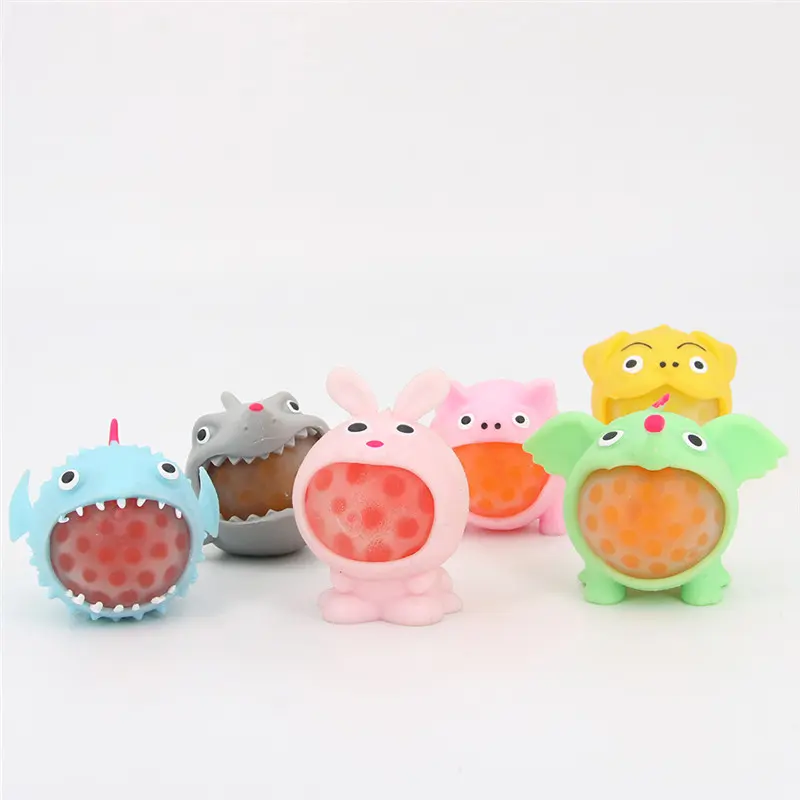Stress has become an integral part of our daily lives, and finding effective ways to deal with it is crucial. Stress balls are popular as a simple yet powerful stress relief tool. But have you ever wondered what’s actually inside a stress ball? In this blog, we’ll delve deeper into the realm of stress balls, exploring their inner workings, benefits, and the fascinating blend of art and science behind them.
Exquisite craftsmanship of small animals in skin:
Before we delve into the anatomy of a stress ball, let’s appreciate the craftsmanship behind our range of skin-covered creatures. Each stress ball in our collection is carefully covered with soft, skin-like material that adds realistic texture and feels extremely realistic to the touch. These stress balls have been carefully designed to replicate the animals’ intricate details, ensuring they appeal to all ages.
shell:
The outer shell of a stress ball is usually made of a stretchy, durable, and flexible material. This material allows users to squeeze the ball repeatedly without damaging it. Our skinned critters are crafted with attention to detail, ensuring the shell replicates the texture and appearance of the animal’s skin.
Filling:
Now, let’s talk about what lies beneath the veneer of reality. The filling of stress balls is usually composed of a variety of materials designed to provide a satisfying and stress-relieving experience. The most common filling materials include:
1. Foam: Foam is a popular choice due to its soft, pliable and sticky properties. It allows the user to squeeze the ball easily and feel a slight resistance when releasing the hand. The foam padding also provides a comfortable feel when squeezed.
2. Gel: Gel-filled stress balls offer a different sensory experience. The gel filling inside the ball creates a soft and malleable texture that adapts to the pressure applied. This dynamic quality makes gel-filled stress balls particularly interesting for many people.
3. Powder: Some stress balls contain fine powdered fillings that provide a unique tactile experience. When squeezed, the powder moves and flows, creating a feeling of relaxation and engagement.
4. Beads: Bead-filled stress balls are another popular variation. These stress balls are filled with small beads or particles that give them a slightly textured feel. When squeezed, the beads create a subtle massaging effect, providing extra sensory stimulation.
The science of stress relief:
Stress balls have long been used as a stress relief tool due to their potential psychological and physiological benefits. Rhythmic squeeze and release movements help promote relaxation and reduce muscle tension. When we squeeze a stress ball, it activates the muscles and joints in our hands, relieving stress and diverting our attention away from negative thoughts.
Additionally, the tactile stimulation provided by a stress ball activates sensory receptors in our hands. This stimulation triggers the release of endorphins, our body’s natural painkillers and mood enhancers. The combination of physical activity and sensory engagement makes stress balls a powerful tool for stress management.
Stress balls are a unique blend of art and science that provide visual pleasure and therapeutic benefits. The meticulous craftsmanship and realistic textures of our skinned critters make them appealing to people of all ages. Understanding the interesting combination of materials inside a stress ball can help you appreciate the sensory experience it provides and the science behind stress relief.
Next time you squeeze a stress ball, remember the thought and expertise that went into creating these simple yet remarkable stress relief tools. Embrace comfort, release tension, and let your stress melt away as you experience the soothing wonders of a stress ball.
Post time: Nov-22-2023
